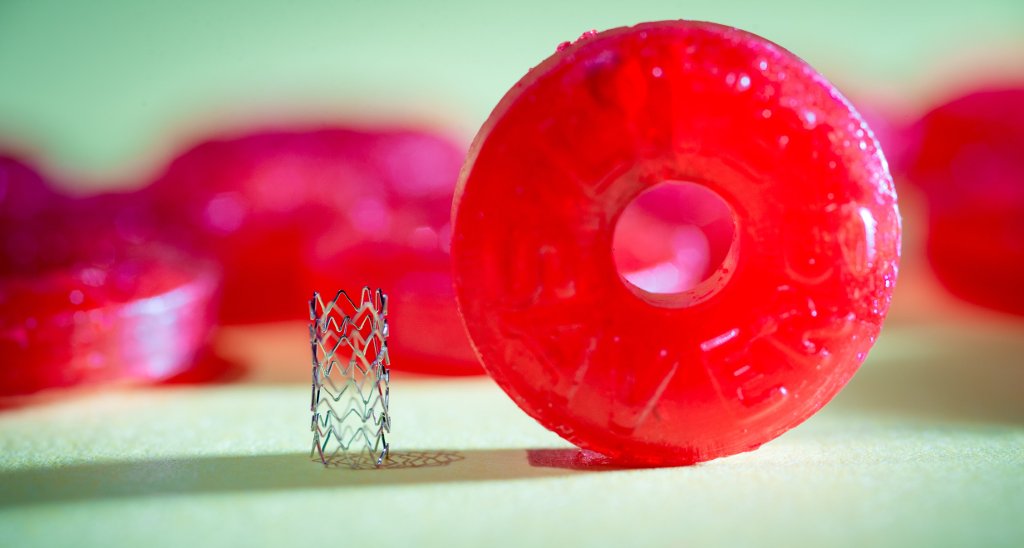Zinc: The Goldilocks Material for Stents?
In 2012, more than 3 million people had stents inserted in their coronary arteries. These tiny mesh tubes prop open blood vessels recovering from procedures like balloon angioplasty, which widens arteries blocked by clots or plaque deposits. After about six months, most damaged arteries are healed and stay open on their own. The stent, however, is there for a lifetime.
Usually, that's not a problem, says Patrick Bowen, a doctoral student studying materials science and engineering at Michigan Tech. But the longer a stent is in the body—and it can be in place for decades—the greater the risk of side effects, like inflammation and clotting.
That's why Bowen and his advisors, faculty members Jeremy Goldman and Jaroslaw Drelich, are developing a stent that will gradually and harmlessly dissolve after the blood vessel heals.
Many studies have investigated iron and magnesium-based stents. Iron is not promising: it rusts. Magnesium, on the other hand, dissolves too quickly. "We wondered, 'Isn't there something else?'" Bowen said. "And we thought, 'Why not zinc?'"
So they placed tiny zinc wires in the arteries of rats. The results were astonishing. "The corrosion rate was exactly where it needed to be," Bowen said. On top of that, the rats' arteries appeared healthy when the wires were removed.
The researchers have filed a provisional patent on their discoveries and are now testing new materials, because they still have one drawback to overcome. "A stent made of conventional zinc would not be strong enough to hold open a human artery," Bowen said. "We need to beef it up. The good news is that we have some alloys that appear to fit the bill."
Since he was ten, Bowen has known he wanted to be a metallurgist, just like his father. "But I certainly never saw myself working with biometals," he said. He had a chance to pursue that line of research as an undergraduate at Michigan Tech and hasn't looked back. "It was challenging, and I loved it," he said. "It turns out that some of the most interesting science is at the interface of materials and biology." After he graduates, Bowen hopes to teach and continue his research as a university professor.
Michigan Technological University is a public research university founded in 1885 in Houghton, Michigan, and is home to nearly 7,500 students from more than 60 countries around the world. Consistently ranked among the best universities in the country for return on investment, Michigan’s flagship technological university offers more than 120 undergraduate and graduate degree programs in science and technology, engineering, computing, forestry, business, health professions, humanities, mathematics, social sciences, and the arts. The rural campus is situated just miles from Lake Superior in Michigan's Upper Peninsula, offering year-round opportunities for outdoor adventure.



